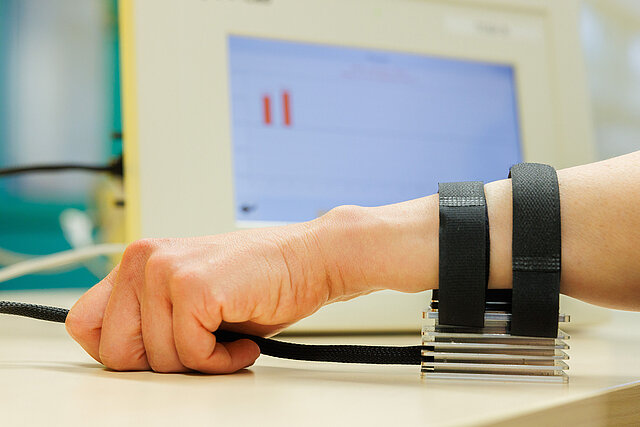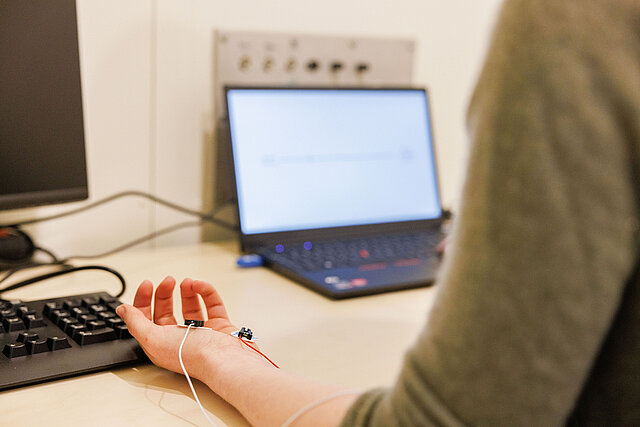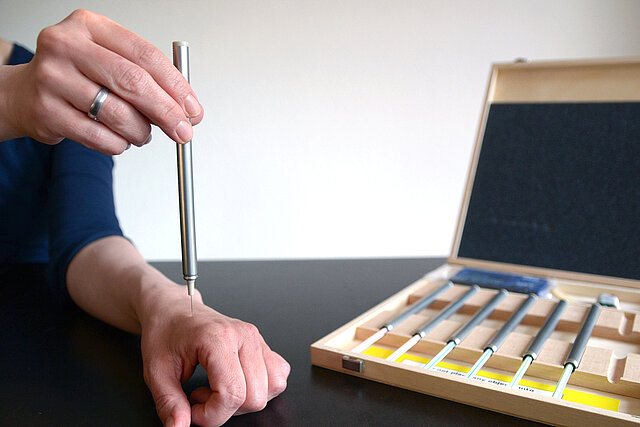Research
The perception of pain and how someone reacts to pain differs significantly from person to person. Our research aims to investigate such differences and underlying psychobiological mechanisms in more detail. For example, we want to investigate which factors influence how well a person can perceive small changes in pain intensity or which factors determine how strong the striving to avoid pain stimuli is. In general, we are interested in how psychological factors such as motivation, emotion, learning, processing of rewards, or personality traits modulate pain perception and what psychobiological mechanisms are involved. This is interesting to study because, for example, differences in how well someone perceives changes in pain intensity or how eager someone is to avoid pain are related to whether or not someone develops chronic pain.
Methods

One possibility to investigate pain experimentally is the application of thermal pain stimuli using a contact thermode (e.g. see above: TCS Thermal Cutaneous Stimulator, QST.lab, Strasbourg). The thermode is applied to the skin and temperatures between 0°C and 50°C are stimulated, whereby the individual minimum and maximum temperatures are adapted to the individual pain threshold and pain tolerance. To provide longer and/or more intense stimulation without risk of injury, a commercial capsaicin cream (capsaicin also being known as the active substance of the chili pepper) is used, if necessary, for sensitization of the receptors in the skin.

Electrical pain stimulation is another commonly used method to study pain perception and its underlying physiological mechanisms in psychological research. When electrical stimuli are used, they are administered transcutaneously by short electrical pulses (e.g., 20 ms) using surface electrodes (e.g., Constant Current Stimulator, Digitimer Ltd, Welwyn Garden City). Here, too, the pain tolerance is not exceeded and the applied current intensity is monitored so that it always remains in the range that is not dangerous for humans. If necessary, additional peripheral physiological measurements are performed. These include non-invasive measurements of skin conductivity (EDA), measurement of the electrical excitation process of the heart using electrocardiograms (ECG) and/or recording of electrical muscle activity using electromyography (EMG).

A third way of investigating pain is by mechanical stimulation of the skin (e.g. by using PinPricks, MRC Systems GmbH, Heidelberg). Here, the surface of the skin is stimulated by pressure. In the specific use of PinPrick stimulators, the needles are pressed onto a confined area on the skin at specific intervals. Here, too, the individual pain threshold and pain tolerance are taken into account by using stimulators with graduated strengths. Thus, measurement of pain summation with repeated stimuli is also possible.

